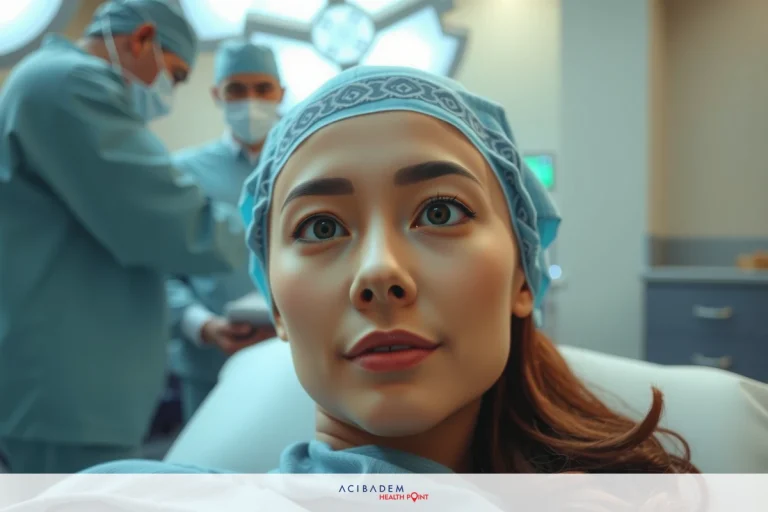When Do Dissolvable Stitches Dissolve Rhinoplasty
When Do Dissolvable Stitches Dissolve Rhinoplasty The landscape of medical science is marked by continuous advancements. One such bright spot has been the advent and widespread application of dissolvable stitches, particularly in rhinoplasty procedures. These sutures offer convenience to patients as they gradually dissolve during the healing process eliminating the need for removal.
Factors influencing this dissolution are manifold, encompassing patient-specific considerations and post- operative care measures. A broad understanding of these elements can empower patients by providing insight into their recovery timeline after rhinoplasty surgery.
Caring for these sutures plays a pivotal role in ensuring an uncomplicated healing trajectory. Proper adherence to recommended guidelines can also help mitigate any potential risks associated with wound repair mechanisms following rhinoplasty surgery.
Timeline for Dissolving Stitches
The interplay between dissolvable stitches and their dissolution timeline is pivotal in rhinoplasty recovery. These stitches, made from materials that the body can absorb naturally over time, are designed to maintain wound closure during the critical healing period following surgery. Their gradual disappearance often signals a successful journey through early recovery stages.
In general terms, dissolvable sutures used in rhinoplasty tend to dissolve between one to two weeks post- surgery. This timeframe, while standard, is influenced by numerous factors including suture material type and individual patient physiology. For some individuals, these stitches may linger slightly longer; nonetheless this does not typically signal any cause for concern.
It’s important to note that while dissolvable sutures diminish visibly within two weeks, internal absorption continues beyond this point. The body works tirelessly at a cellular level to process and eliminate these materials as part of the larger healing process. The understanding of this intricate timeline aids patients in setting realistic expectations regarding their rhinoplasty recovery.
Factors Affecting Dissolving Time
The dissolution process of dissolvable stitches post-rhinoplasty is not a one-size-fits-all scenario, but rather an individualistic journey. The body’s unique rhythm and pace in processing these materials can create variations in the timeline for complete absorption of sutures. Individual health factors such as age, overall wellness, and specific genetic predispositions can influence how quickly these stitches dissolve.
Suture material itself is another key player impacting the rate at which dissolvable stitches disappear. Different types of sutures made from various absorbable materials each carry their own standard timeframes for dissolution. Furthermore, the thickness or size of the suture thread used during rhinoplasty could also play a role; thicker threads generally take longer to dissolve compared to thinner ones.
Post-operative care significantly sways this dissolution timeline too. Maintaining cleanliness at the surgical site, following prescribed medication routines and adhering to recommended lifestyle modifications can all contribute positively towards timely stitch absorption. Conversely, infection or complications encountered during recovery may potentially prolong this process by necessitating additional healing time for tissues around suture sites.
Caring for Dissolvable Stitches
The care and management of dissolvable stitches during the post-rhinoplasty recovery period is a critical aspect

not to be overlooked. Proper care can facilitate the timely dissolution of these sutures, promoting an efficient healing process and minimizing potential complications.
Here are some important tips that can contribute positively to your recovery journey:
Keep the surgical site clean: A clean wound environment supports faster healing and reduces risks associated with infection.
Avoid touching or disturbing the stitches: It’s natural to feel curious about the stitches but try resisting this urge as it may disrupt their integrity.
Follow medication routines: Adherence to prescribed antibiotics or other medications helps combat potential infections, aiding in quicker stitch absorption.
Stay hydrated and maintain a balanced diet: Good nutrition provides essential building blocks for wound repair and suture dissolution.
Limit physical activities if advised by your surgeon: Excessive movement might strain your sutures, potentially delaying their dissolution time.
Each patient’s experience with dissolvable stitches varies. If you notice any signs of infection like increased redness, swelling or pain at the surgical site, seek medical attention immediately. Being proactive in caring for your stitches can significantly improve your overall rhinoplasty recovery experience.
Frequently Asked Questions
What are dissolvable stitches?
Dissolvable stitches, also known as absorbable sutures, are a type of suture material made from substances that the body can naturally break down and absorb. They are commonly used in surgeries like rhinoplasty.
How long do dissolvable stitches usually take to dissolve after rhinoplasty?
On average, dissolvable sutures tend to disappear within one to two weeks post-rhinoplasty. However, internal absorption continues beyond this visible period.
Can I influence how quickly my dissolvable stitches will dissolve?
Yes, factors such as adhering to prescribed medication routines, maintaining cleanliness at the surgical site and following recommended lifestyle modifications can all contribute positively towards timely stitch dissolution.
What should I do if my dissolvable stitches have not dissolved within the expected timeframe?
If you notice your stitches lingering past their expected dissolution timeline or witness any signs of infection such as increased redness or swelling at the wound site, it's crucial you reach out to your healthcare provider for advice.











